|
Reducing salt content in cheeses
- The optimisation of cheese salt level from 0% to -30% in relation with fermentations has been done in hard cheese but seems difficult in smear soft cheeses.
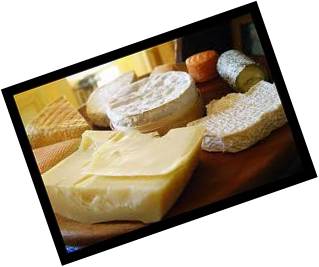
- The study of consequences of reduction to maturation (proteolysis, lipolysis) is in progress; good results have been obtained so far and further investigation is underway.
- The study of the influence of salt-level reduction on cheese quality and acceptability is in progress. As a preliminary result, undesirable fermentations have been observed in low-salt cheeses of a specific type. Analyses are ongoing to understand this phenomena.

Reducing fat and sodium in cooked and dry-fermented sausages
Targeted products contain high levels of fat (20-30%) and salt (2-5%).
Main objective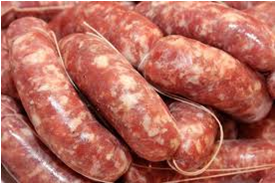
Develop production procedures for sausages reduced in fat (50-60%) and sodium (30-50%) while maintaining comparable sensory characteristics to the original products and at the same time ensuring food safety.
Focus given so far
Cooked sausages:
- Fat reduction through the use of multiple emulsions
Dry-fermented sausages:
- Fat substitution (SFA ? PUFA)
- Sodium reduction through pre-drying techniques and substitution of NaCl with KCl
Main achievements
Cooked sausages:
- 30% fat reduction seems feasible through the use of multiple emulsions without detrimental effects on quality
- Further reduction to 50% will require additional actions
Dry-fermented sausages:
- Different pre-drying techniques allow for 20-30% reduction of salt, however some challenges related to sensory quality and safety arise
- KCl addition seems to be a good strategy for sodium reduction
- Cryo-crystallised fats and emulsions with vegetable oils are less suitable as fat reduction strategies in these product

Bakery products with reduced fat and sugar content
Main objective
To reduce both the fat and sugar content of bakery products by up to 25% while keeping processing stability and fat functionality, sensory perception, texture properties and consumer acceptance of the products unchanged.
Approach
- Develop heat stable multiple emulsions (gelation of inner water phase) and combine with sugar replacement strategies
- Determination of stability and functionality of fat during processing, heating, baking and storage accounting for industrial specifications for basic recipes and process conditions
- Determination of effects of replacement on rheological and sensory properties
- Up-scaling and consumer acceptability testing


Reduction of fat and sodium in readymade sauces and meals
Each year, €15b are spent on ready meals in EU. These foods contribute largely to fat and salt intake.
TeRiFiQ is developping generic ready-made sauces and meals which are significantly reduced in fat (30%) and salt (20%), but retain comparable sensory characteristics to the original product.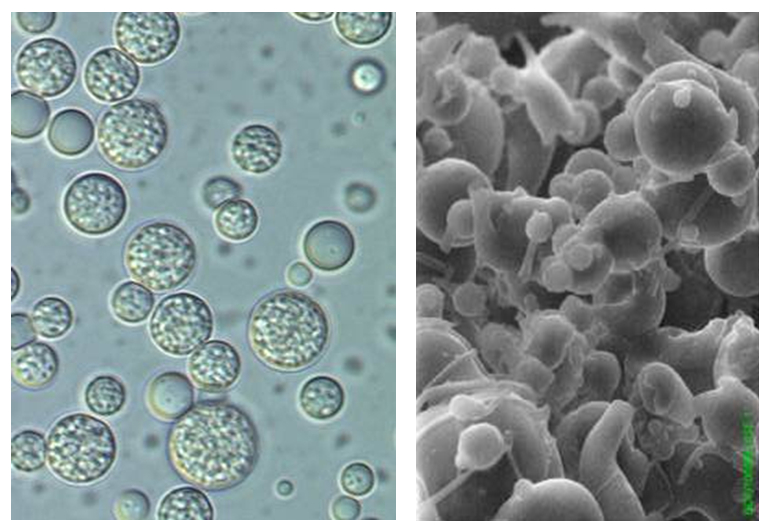
Initial focus has been given on Multiple Emulsions to reduce fat content, particularly stability to processing.
Multiple emulsions: Using multiple Water in Oil in Water emulsions to reduce fat content by up to 40% in emulsified sauces
Stable multiple WOW emulsions, resistant to high shear and temperature (up to 200°C). Stability improved by gelling internal water droplets (Gel in Oil in Water – GOW).
- Salt reduction / processing can affect osmotic gradient & reduce stability.
- GOW emulsions more resistant to changes in salt.
- Stability depends on PGPR as primary emulsifier, other emulsifiers and EU regulations being investigated.
- Applicability to other products, (bakery and cooked meat) being investigated.
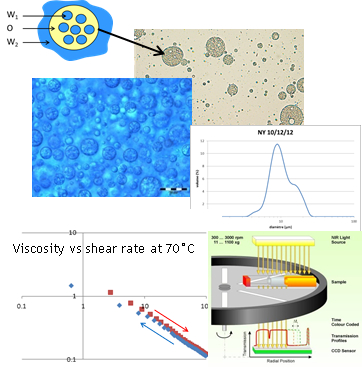

Optimising flavour release and perception changes induced by fat, sodium or sugar reduction
To reach this objective, multi-targeted analyses are conducted.
Perceptual interactions
Perceptual interactions are studied in order to compensate salt, sugar and fat reduction. In particular, congruent aroma enhancing saltiness, sweetness or fatness are investigated on different model foods.
In vivo flavour release and perception
In vivo flavour release and perception of foods representing the different categories. Temporal perception (TDS, TI) will be related to kinetics of flavour (PTRMS) and taste compounds release, in relation with food composition.
In vitro flavour release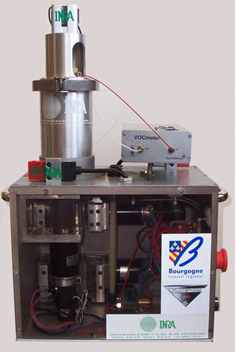
Devices simulating the oral process will be used to study taste and flavor release in complement of the in vivo study in order to study relations between matrix composition and flavor release in controlling oral parameters.
Small size solute diffusion in reformulated products
Partition coefficient and diffusion of small size solutes from the food matrices to saliva phase are measured for each reformulated and unreformulated matrices.
Specific NMR methods will be used to determine free and bound sodium fraction in each matrix and diffusion of small solutes inside the matrices.
|